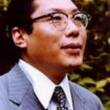How We Live Is How We Die
(Libby/OverDrive eBook, Kindle)
Available Platforms
Description
More Details
Similar Titles From NoveList
Similar Authors From NoveList
Published Reviews
Publisher's Weekly Review
In this sage treatise, Buddhist nun Chödrön (Welcoming the Unwelcome) muses philosophically on life transitions. She suggests that "life is a bardo"--the Buddhist concept that describes the liminal state between death and rebirth--marked by continual change, and that accepting this constant transition is the path to spiritual enlightenment. Chödrön challenges the dualistic notion that bardos are either real places or metaphors for psychological experiences, instead positing they lie somewhere in between. She notes that the "end of one experience is the beginning of the next experience," and urges readers to embrace this flow by confronting one's emotions and accepting negative events as an inevitable part of life. Meditation is key to becoming attuned to the flow of consciousness, Chödrön contends, because it exposes the transience of one's thoughts and feelings. "To be fully intimate with life, I feel we have to be fully intimate with death," she writes, encouraging readers to "develop the capacity to stay in... uncomfortable, edgy places of uncertainty" so that one might someday approach death with grace rather than panic. Chödrön's straightforward prose grounds the thoughtful examination of what the bardo can teach readers about meeting suffering with kindness and compassion. This wise volume shines. (Oct.)
Library Journal Review
In this collection of spiritual teachings and reflections, American Buddhist nun Chödrön (How To Meditate) explains that if people take the time to embrace and navigate transitions in their daily lives, they will be better prepared for death and whatever may follow. The term "bardo," found and taught in The Tibetan Book of the Dead, usually refers to the intermediate state between lives or any period of transition. Chödrön aspires to use these teachings to encourage an open, curious approach to death and other difficult transitions. She offers guidance on facing uncomfortable feelings and embracing the constant changes life brings. An appendix includes guided practices and resources. A foundational knowledge of Buddhism is helpful for readers, but Chödrön's clarity and warmth make this book accessible to a wide array of audiences. VERDICT Oft-quoted, much beloved, and radiating kindness, Chödrön remains a guiding light for those seeking spiritual growth.--Anitra Gates
Library Journal Reviews
In this collection of spiritual teachings and reflections, American Buddhist nun Chödrön (How To Meditate) explains that if people take the time to embrace and navigate transitions in their daily lives, they will be better prepared for death and whatever may follow. The term "bardo," found and taught in The Tibetan Book of the Dead, usually refers to the intermediate state between lives or any period of transition. Chödrön aspires to use these teachings to encourage an open, curious approach to death and other difficult transitions. She offers guidance on facing uncomfortable feelings and embracing the constant changes life brings. An appendix includes guided practices and resources. A foundational knowledge of Buddhism is helpful for readers, but Chödrön's clarity and warmth make this book accessible to a wide array of audiences. VERDICT Oft-quoted, much beloved, and radiating kindness, Chödrön remains a guiding light for those seeking spiritual growth.—Anitra Gates
Copyright 2022 Library Journal.Publishers Weekly Reviews
In this sage treatise, Buddhist nun Chödrön (Welcoming the Unwelcome) muses philosophically on life transitions. She suggests that "life is a bardo"—the Buddhist concept that describes the liminal state between death and rebirth—marked by continual change, and that accepting this constant transition is the path to spiritual enlightenment. Chödrön challenges the dualistic notion that bardos are either real places or metaphors for psychological experiences, instead positing they lie somewhere in between. She notes that the "end of one experience is the beginning of the next experience," and urges readers to embrace this flow by confronting one's emotions and accepting negative events as an inevitable part of life. Meditation is key to becoming attuned to the flow of consciousness, Chödrön contends, because it exposes the transience of one's thoughts and feelings. "To be fully intimate with life, I feel we have to be fully intimate with death," she writes, encouraging readers to "develop the capacity to stay in... uncomfortable, edgy places of uncertainty" so that one might someday approach death with grace rather than panic. Chödrön's straightforward prose grounds the thoughtful examination of what the bardo can teach readers about meeting suffering with kindness and compassion. This wise volume shines. (Oct.)
Copyright 2022 Publishers Weekly.Reviews from GoodReads
Citations
Chödrön, P. (2022). How We Live Is How We Die . Shambhala.
Chicago / Turabian - Author Date Citation, 17th Edition (style guide)Chödrön, Pema. 2022. How We Live Is How We Die. Shambhala.
Chicago / Turabian - Humanities (Notes and Bibliography) Citation, 17th Edition (style guide)Chödrön, Pema. How We Live Is How We Die Shambhala, 2022.
Harvard Citation (style guide)Chödrön, P. (2022). How we live is how we die. Shambhala.
MLA Citation, 9th Edition (style guide)Chödrön, Pema. How We Live Is How We Die Shambhala, 2022.
Copy Details
| Collection | Owned | Available | Number of Holds |
|---|---|---|---|
| Libby | 2 | 1 | 1 |


































